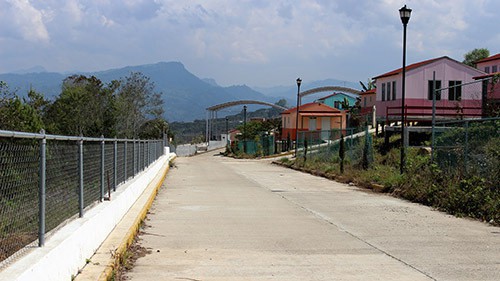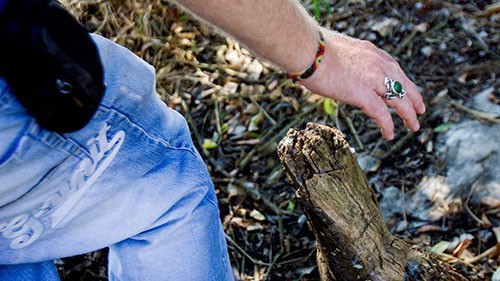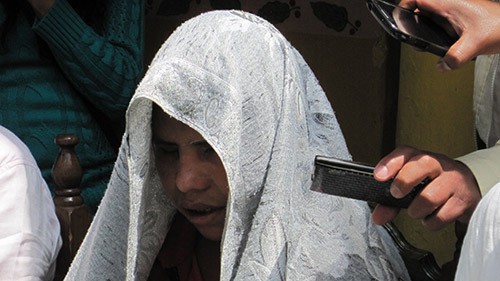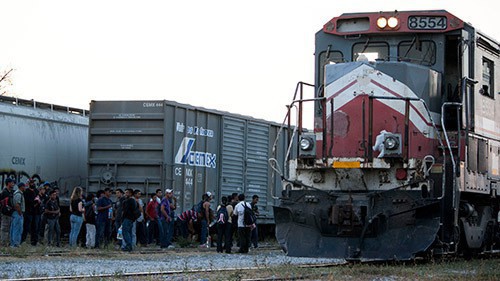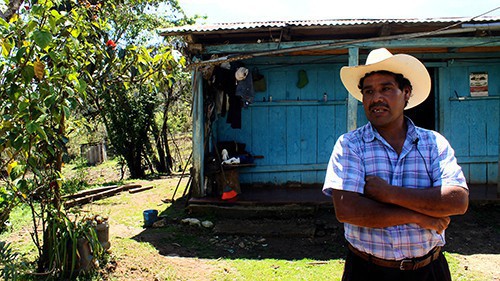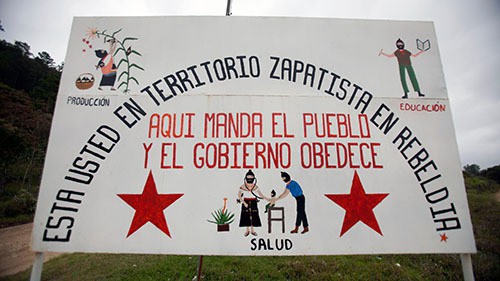
California-Chiapas, other climate-change plans could see new life
By Carolina Lopez and Yihyun Jeong / Cronkite Borderlands Project
Published Sept. 25, 2014
TUXTLA GUTIERREZ, Chiapas, Mexico – The concept was complex and controversial: California companies would be allowed to exceed limits of carbon-dioxide emissions by paying to protect rainforests abroad.
The pollute-locally, restore-globally strategy was put forth in a 2010 memorandum of agreement between then-California Gov. Arnold Schwarzenegger and representatives from the states of Chiapas, Mexico, and Acre, Brazil.
The goal was to create incentives for the countries to move forward in developing programs to reduce greenhouse-gas emissions. California companies would pay to preserve tropical forests that scientists say are key to slowing the generation of greenhouse gases and climate change.
But four years later, the program in Chiapas has stalled. The state officials who made the agreement are out of office and Mexico’s national government now has its own climate-change policy with which state governments must coordinate.
The administration of current Chiapas Gov. Manuel Velasco Coello, a member of the Green Party, is developing its own, new, statewide approach that is congruent with the national government’s strategy for reducing emissions, deforestation and degradation of forests, known in environmental circles as REDD – Reducing Emissions, Deforestation and Degradation.
Guillermo Velasco, Chiapas coordinator for Alianza Mexico REDD+, said that when the agreement with California was signed in 2010, Chiapas began independently developing its own REDD strategy.
“That caused a bit of friction between the federal government and Chiapas,” said Velasco, whose group is working with federal and local governments and other organizations to help implement the national strategy.
That original 2010 agreement called for linking Chiapas to California in a state-based REDD program.
“That was the intent,” Velasco said. “There wasn’t anything concrete.”
But there is new hope that the Chiapas program, along with others in Mexico, will take shape. On July 28, California Gov. Jerry Brown signed a new agreement with Mexico’s federal government to work cooperatively to cut pollution and battle climate change.
The non-binding agreement, signed in Mexico City, pledged that California and Mexico would “cooperate and coordinate efforts” on climate change, share research and develop and implement “carbon-pricing systems,” according to the Sacramento Bee.
The possibility of such an agreement was foreshadowed by Brown’s administration earlier this year.
“We are looking to see what the national Mexican government is doing with the climate issues,” California Secretary for Environmental Protection Matt Rodriguez, said in an interview.
Clearing the air
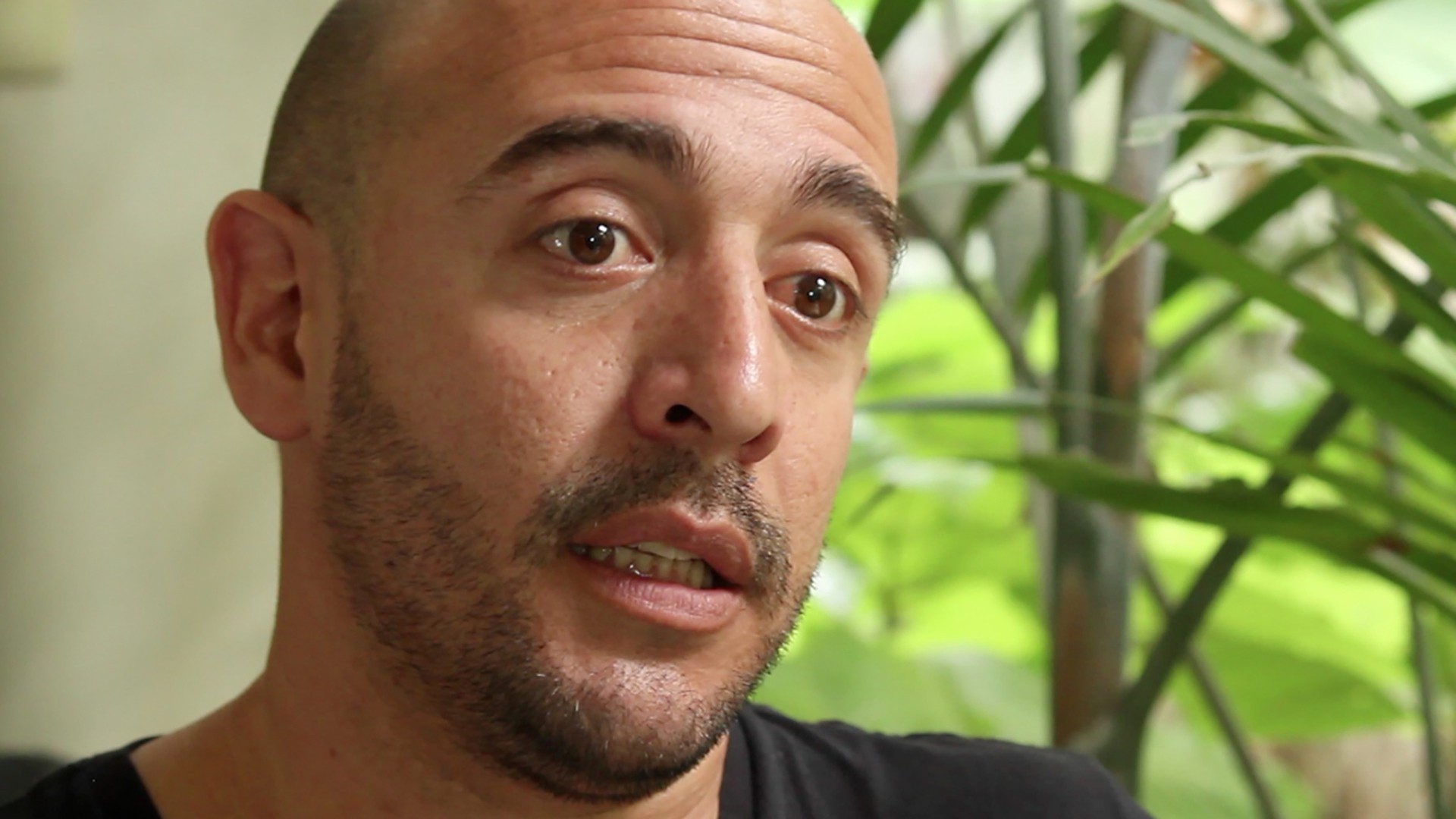
Supporters of pilot REDD projects in Chiapas believe their program to reduce emissions will eventually benefit California and the indigenous populations of Chiapas, as well as having a positive impact on the global environment.
The formulation and implementation of a REDD strategy for Chiapas that aligns with the federal government isn’t far off, said Wilber Arturo Nunez Camas, the state’s director of environmental planning and ecological zoning.
“I don’t think it will be long. What happened is that the strategies in Chiapas weren’t congruent with the rest of the country,” Nunez Camas said. “The past (REDD) objectives of the state weren’t accomplished and new strategies needed to be developed.”
In California, the branch chief of the cap-and-trade effort, Rajinder Sahota, acknowledged in March that more attention has been given to offset credits at home in the past but, “it’s slim pickings if everything is limited to California.”
The California Air Resources Board (ARB) creates “allowances,” which are credits that allow major polluters in California to emit one metric ton of carbon dioxide. The state distributes allowances to regulated business for free or allowances are sold to them at a quarterly auction. Regulated businesses can buy and sell allowances, i.e. “trade” them.
The program also allows for companies to use carbon-offset credits as part of their compliance. These offset credits are generated by projects that reduce greenhouse gases.
At the end of each compliance period, companies must give the government enough allowances and/or offset credits to cover the amount of greenhouse gases they emitted.
International offset credits would work by linking to other trading programs. Linking programs would allow for mutual use of credits created within a state or country’s program. Currently, California has linked to Quebec, paving the way for other linkages.
Any program California would link to would need to be statewide or national, and the program “would have to be robust,” Sahota said. “We would have to make sure that any offsets that come out of that sector-based program met the AB32 criteria.”
AB32, the California Global Warming Solutions Act of 2006, requires the state to cut greenhouse gas emissions to 1990 levels by 2020.
The start of the cap-and-trade program in California saw a quiet offset market. However, credit prices have stabilized in the secondary market and the number of traded credits has increased, reflecting increased participation and confidence.
This could mean a possible increased interest in offset credits. If every entity wanted to maximize the amount of offset credits they are allowed to use, there are not enough credits for the 2015-2017 and 2018-2020 compliance periods, Sahota said. This would make international offsets are a logical choice.

There is not yet a program in Mexico that the ARB could look to for a connection, but the board has been open to linking with other compatible programs, domestically and abroad, Sahota said. “But until there’s a program in place for us to evaluate and consider, it’s hard to say if there will be a future linkage,” she noted.
In the meantime non-governmental organizations in Chiapas are implementing pilot projects aimed at protecting the wealth of natural resources the southern Mexican state has to offer, as well as providing economic benefits to indigenous people.
They say the results from the pilot projects will help with the implementation of REDD strategy and give the government an idea of which programs would do well.
“At the end of our projects, we’ll put together a spectrum of options and say, ‘Listen, if you want or are interested in the development of REDD projects for the national strategy, that will now start to count, here are all our results,’” Velasco said.
A cautious approach
Those individuals working to preserve the resources and jungles of Chiapas and their communities are passionate and steadfast in the work they do. They visit the communities undertaking projects when they can, but only with invitation and notice first.
The cautious approach stems from previous claims that REDD projects were being forced on the indigenous populations for the purpose of creating carbon credits and for the government to gain land control. Velasco said that simply wasn’t true but nevertheless the current administration is distancing itself from the old unsuccessful strategy.
The past REDD strategy objectives “weren’t really well developed so we had to rethink them,” said Nunez Camas, the Chiapas director of environmental planning and ecological zoning.
Alianza’s Chiapas headquarters is tucked away in a neighborhood outside the center of the hot and smoggy state capital of Tuxtla Gutierrez. Entering the office is something of a shock when coming from the center of Tuxtla, with its heavy traffic and city bustle. The front door opens and leads to an open-air room with smooth white tile and lush green plants in the center and corners.
Velasco, tall with warm brown eyes and a golden complexion, explains that Alianza is working with three small-scale pilot projects in Chiapas and three more in development. They are also working within eight different regions in Mexico: the coastal watersheds of Jalisco; the jungle in the peninsula of the Yucatan; the Puuc region and the Chenes in Yucatan and Campeche; the Lacandon jungle in Chiapas; the interior basins of the Sierra Madre of Chiapas; the sub-basins of Cutzamala in Michoacan and the state of Mexico; the Sierra Raramuri in Chihuahua; and the forest communities in Oaxaca.
These pilot projects are aimed at reducing emissions on a small scale with safeguards and benefits to the indigenous communities involved. Alianza works closely with the federal government through the National Forestry Commission of Mexico (CONAFAR) and the secretary of environment, Velasco said.
“Every project has something about it that interests me and I’m proud of,” Velasco said, adding “it’s very important to have strategies by the communities themselves, with perhaps help from the government or other organizations, to find ways in which rural communities can elevate their quality of life.”
Velasco is adamant that the REDD projects have safeguards to ensure that projects are inclusive and respectful of local communities.
“The communities of indigenous people and the populations of farmers, not only in Mexico but everywhere in the world, are situated where the majority of the natural world is left. From my point of view, I think they deserve the best,” Velasco said.
One of the projects works to grow coffee in a sustainable manner, underneath the shade of natural greenery. Shade-grown coffee helps reduce carbon emissions because the sequestered carbon is stored in the tree trunks, foliage, leaves, etc., instead of going into the atmosphere. The soil in shade-grown coffee holds carbon from the organic matter that gathers in the ground and is broken down over time.
This coffee cooperative, Comon Yaj Noptic, is three hours south of Tuxtla Gutierrez. It includes women working on growing the coffee, which is rare, Velasco said. The women in the community were previously not included in the decision-making process or selling of the beans, but now the women in the cooperative are involved and recognized.
Instituto Para el Desarrollo Sustentable En Mesoamerica, A.C. (IDESMAC), a non-governmental organization formed in 1995, works with Comon Yaj Noptic, as well. It has eight areas of work in both Chiapas and Oaxaca.
In the past, the women in the cooperative would contribute up to 16 percent of the total work put into coffee-bean production, but the work was not paid or recognized, said IDESMAC Executive Director Cristina Reyes.”
“Our job has been to help recognize the work that is done by the woman in the cooperative,” Reyes said.
“What we propose is that the coffee industry not just be seen as a process by men,” Reyes said, adding that her group is developing a certification system to recognize the work of women in coffee production and coffee grown with lower or zero emissions.
Making progress
AMBIO, an organization that develops programs and projects with rural communities, has had success with its program, Scolel Te, which has been in operation since 1997. The program has seen increased sales of carbon credits over the years with the resulting payments made directly to the communities by AMBIO.

While Scolel Te is not a REDD project, it emphasizes carbon capture through reforestation and forest management. It supports more than 1,000 producers within 89 communities, and the generated carbon credits have been sold in the voluntary carbon market, said Elsa Esquivel, AMBIO’s legal representative.
Some of those purchasing credits created by Scolel Te are the state-owned Mexican petroleum company and a Dutch multinational bank, according to the Scolel Te annual report.
“Climate change and the growing carbon market provides an opportunity for rural and indigenous communities to better themselves,” Esquivel said.
The shift in focus from the state of Chiapas to the whole of Mexico doesn’t mean the diminishment of a Chiapas REDD strategy, but rather an increased focus on getting it right on the state and federal levels with the help of those pilot programs.
Chiapas Secretary of Environment and Natural History Carlos Orsoe Morales Vazquez said NGOs like IDESMAC and AMBIO “are organizations that we coordinate with on some actions and coincide with on others and that helps, so that the load isn’t as heavy for us.”

There is a need to develop unified criteria for governments to follow so that they can connect with industries looking to purchase carbon credits, Morales Vasquez said.
“Of course there is restoration, preservation, the sequestration of carbon, but hey, what will be the criteria in order to verify that it’s done? It is done through studies, through projects, but ultimately the rules we would need tap into resources have not been finished,” he said.
For Reyes, Esquivel and Velasco, although assisting the government in developing REDD strategies is important, the motivating factor is helping rural and indigenous communities move forward in a sustainable manner.
“We want to say that over 20 years we did something, because that coffee cooperative keeps producing sustainably, because those women now have a different vision for their lives, because that community wanted to allocate part of their land for conservation, because that youth that is part of that community had a dream and we accompanied him in that dream,” Reyes said.
“That is our job, day to day to motivate, day to day to generate change even though it’s very small but it’s change,” Reyes said.

